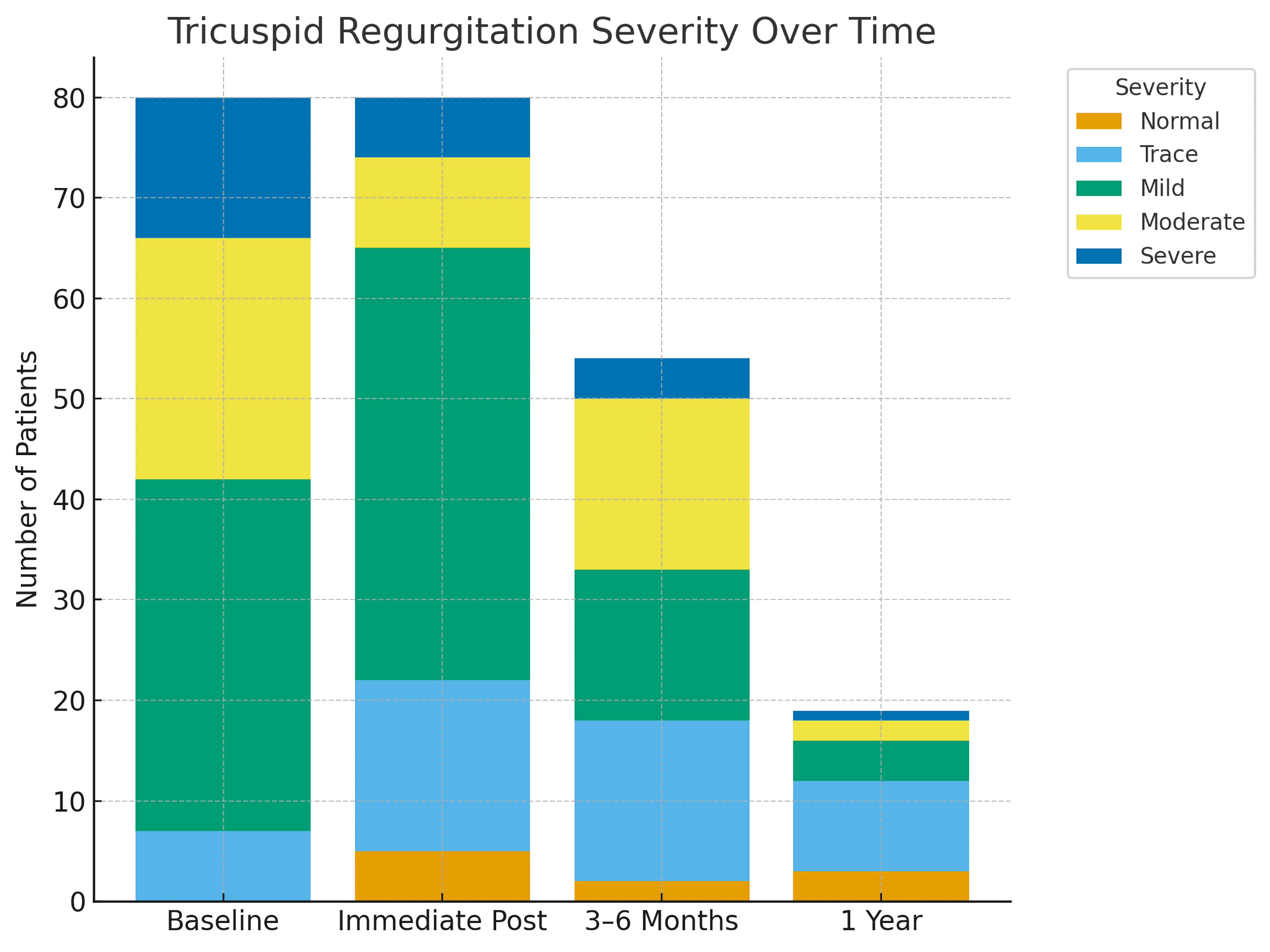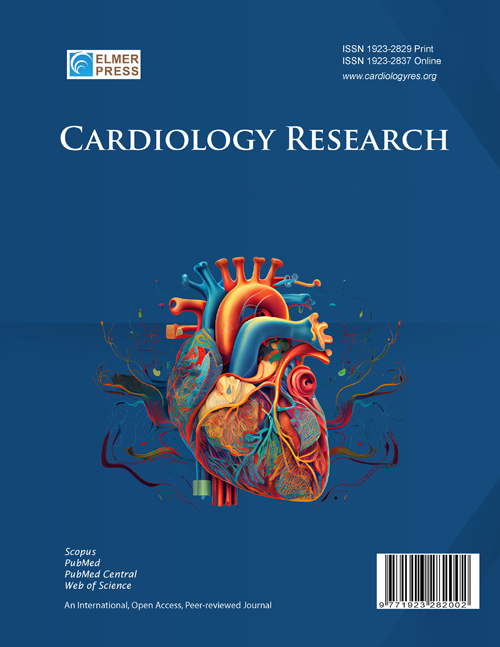Echocardiographic Evaluation of Right Heart and Hemodynamic Changes After Transcatheter Secundum Atrial Septal Defect Closure in Adults: A Single-Center Retrospective Study
DOI:
https://doi.org/10.14740/cr2116Keywords:
Transcatheter, Atrial septal defect, Right heart, Pulmonary pressure, Congenital heart diseaseAbstract
Background: Transcatheter closure of secundum atrial septal defects (ASDs) is a widely accepted intervention in adults with left-to-right shunting and right heart volume overload. However, the time course and magnitude of cardiac remodeling and functional improvement after closure remain incompletely defined. This study evaluated serial echocardiographic changes in right heart structure and hemodynamics following ASD closure.
Methods: In this single-center retrospective cohort, adults who underwent transcatheter secundum ASD closure between January 2020 and December 2023 were included. Echocardiography was performed at baseline, immediately post-procedure, at 3 to 6 months, and at 1 year. Parameters included right atrial (RA) area and volume index (RAVI), right ventricular (RV) dimensions, pulmonary valve velocities, RV systolic pressure (RVSP), mean pulmonary artery pressure (mPAP), tricuspid annular plane systolic excursion (TAPSE), and tricuspid regurgitation (TR) severity. Analyses used Wilcoxon signed-rank tests, Chi-square tests, repeated-measures analysis of variance (ANOVA)/multivariate ANOVA (MANOVA), and mixed-effects models.
Results: Eighty patients were included (mean age: 42.3 ± 15.0 years; 72.5% female). Immediately after closure, significant reductions were observed in TR Vmax (-20.8 cm/s, P = 0.0005), pulmonary valve Vmax (-32.1 cm/s, P < 0.0001), Vmean (-18.6 cm/s, P < 0.0001), velocity time integral (VTI) (-6.9 cm, P < 0.0001), RA area (-2.6 cm2, P < 0.0001), RAVI (-7.0 mL/m2, P < 0.0001), RVSP (-7.7 mm Hg, P < 0.0001), QP:QS (-0.8, P ≤ 0.0001), and mPAP (-10.0 mm Hg, P = 0.0007). Improvements were sustained at 3 - 6 months (n = 54) and at 1 year (n = 19).
Conclusions: Transcatheter ASD closure in adults results in early and sustained improvements in RA and ventricular remodeling, pulmonary pressures, and TR severity. These findings underscore the role of echocardiography in longitudinal surveillance and support timely intervention in patients with significant shunting (QP:QS > 1.5). Larger multicenter studies with extended follow-up and correlation to clinical outcomes are warranted.

Published
Issue
Section
License
Copyright (c) 2025 The authors

This work is licensed under a Creative Commons Attribution-NonCommercial 4.0 International License.










